by Irina Tsukerman

In an age of manufactured crises and strategic smoke screens, the latest US-Russia prisoner swap is not just a headline-grabbing maneuver — it is a Rorschach test of state priorities, values, and vulnerabilities. On its surface, it appears to be a diplomatic achievement, even a rare gesture of humanity. But underneath lies a tale of asymmetric interests, exploitative tactics, and a troubling precedent that may redefine the future of hostage diplomacy.
The Battle for Narratives: Strategic Communications and Information Warfare in Hostage Diplomacy

Hostage diplomacy, though often viewed through the lens of transactional exchanges and geopolitical maneuvering, is equally an exercise in narrative warfare. In the increasingly connected and media-driven world, who controls the story can be as important as the prisoners themselves. Strategic communications and information warfare have become integral to the success (or failure) of these high-stakes negotiations. Whether it’s the U.S. positioning itself as a compassionate defender of human rights or Russia wielding its prisoners like pawns in an ideological game, the battle for public perception is often just as critical as the exchange itself.
The latest U.S.-Russia prisoner swap facilitated by the UAE is no exception. What’s fascinating about this specific exchange is not just the individuals involved or the geopolitical significance—but how each side has handled the narrative in the global media landscape.
Hostage Diplomacy as a War of Words: The Global Stage as a Battlefield

In hostage diplomacy, the message matters more than the mechanics of the exchange itself. For the U.S., Russia, and even the UAE, the art of strategic communication is the unseen force that shapes public perception and influences the eventual diplomatic fallout. The game here is to craft a compelling narrative that plays on emotions, creates legitimacy, and frames the exchange in a way that is favorable to one’s geopolitical goals.
Take the U.S.-Russia exchange that just took place in the UAE. While Washington crowed about bringing home an American citizen and how this reflected America’s commitment to securing the release of detained nationals, Russia’s spin on the matter was remarkably different. From their perspective, the exchange was a justified return of their citizen—in other words, they were portrayed as victims of unjust detention, not aggressors. Here, the narrative split between these two superpowers wasn’t just about who “won” or “lost” in terms of getting their people back. It was about who could control the moral high ground—the humanitarian angle versus the legal angle.
The UAE’s Silent Role: Mastering the Art of Middleman Diplomacy

The UAE, often described as the ultimate quiet operator in Middle Eastern diplomacy, plays a fascinating role in this exchange. By facilitating the swap, the UAE positions itself as a key player in the geopolitical chess game, while simultaneously staying out of the narrative limelight. The UAE mastered the art of quiet influence, making itself indispensable without drawing attention to its role in the same way countries like the U.S. and Russia might.
But beyond facilitating negotiations, the UAE is increasingly aware of the power of narrative. It isn’t just about delivering a result; it’s about crafting an image as a neutral and reliable diplomatic broker. In a region where geopolitical alliances are constantly shifting, the UAE is cleverly positioning itself as the go-between—a country that can work with both the West and Russia, even as it strategically aligns with global powers. The UAE’s role isn’t just about facilitating the exchange but mastering the back-channel diplomacy that underpins these exchanges.
By positioning itself as an adept facilitator of complex, high-profile exchanges, the UAE is rewriting its own narrative. It’s not just about oil money or regional politics anymore. The UAE has risen as a player in global diplomacy and is shaping its international identity through these high-stakes exchanges.
Russia’s Play: Information Warfare as Political Currency

Russia, like China and Iran, has long understood that information warfare is just as critical to its diplomatic toolkit as its military might. The 2019 release of Maria Butina, a Russian citizen detained in the U.S., was presented as a victory for Russian diplomacy, but also as a defiance of U.S. hypocrisy. The message wasn’t just about one individual coming home; it was about showing the West’s flawed justice system. This plays into the larger Russian narrative of resistance to Western hegemony and highlights its role as a righteous power confronting imperialism.
In this latest exchange, Russia’s informational strategy has been consistent: the detained citizens are victims of unjust policies and conspiracies. The U.S., in turn, is framed as the overreaching empire, and the UAE’s involvement allows Russia to maintain its geopolitical posture without alienating regional allies. Russia’s strength in crafting the narrative around its exchanges allows it to cultivate sympathies among certain global populations that are skeptical of the West.
For Russia, these exchanges aren’t just about immediate wins but about continuously shaping public perception and pushing its anti-Western narrative in the global media. It’s a war of words that strengthens the Kremlin’s ideological stance while making Western powers look weak or compromised.
The U.S. Approach: Moral High Ground and Global Compassion

The U.S. continues to cast its prisoner exchanges in terms of human rights and moral clarity. The release of Americans detained in foreign countries is framed as an emotional and humanitarian victory, showcasing the U.S. as the leader of the free world, always willing to secure its citizens’ freedom, no matter the cost. And while this is certainly a powerful narrative in the short term, it often comes with its own set of downsides.
When these exchanges are portrayed purely through the humanitarian lens, the U.S. runs the risk of appearing inconsistent. As seen in the Griner-Bout swap, Americans start questioning why certain citizens get released while others do not. The narrative of fairness is often called into question. Were the exchanges based on strategic priorities, or did they simply cater to the loudest domestic media outcry?
The optics of prisoner diplomacy, when framed as a moral imperative, become difficult to balance. The U.S. may look good temporarily, but over time, the effectiveness of this narrative is diluted as the public grows weary of the constant negotiation with authoritarian regimes. It’s a strategy that often leaves the U.S. on the defensive—always reacting to the pressure rather than playing a calculated diplomatic game.
China and Iran’s Use of Hostage Diplomacy as Ideological Warfare
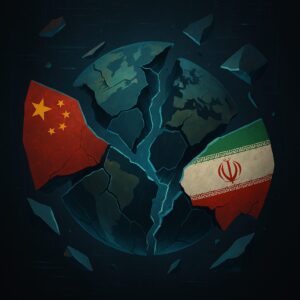
Both China and Iran have long known how to harness hostage diplomacy in an effective, though far less transparent, manner. Both use hostage-taking and exchanges to project ideological power, sending a message that their positions are not to be questioned.
In China’s case, hostages often become symbols of Chinese strength and sovereignty. The detention of Western journalists or academics serves as a warning to the world that any interference with Chinese internal policies will have consequences. By framing these exchanges as upholding Chinese dignity, Beijing manages to dominate the narrative, sidestepping international criticism, and presenting the West as the true aggressor.
Iran’s use of hostage diplomacy is similarly tied to its ideological narrative of resistance. Hostages, especially dual nationals, are often used to demonstrate Iran’s defiance against Western imperialism, a central theme in Iranian statecraft. Tehran’s media machine plays a pivotal role in casting these exchanges in a light that fits within their narrative of anti-Western solidarity.
The Future of Hostage Diplomacy: The Shift Toward Information Warfare
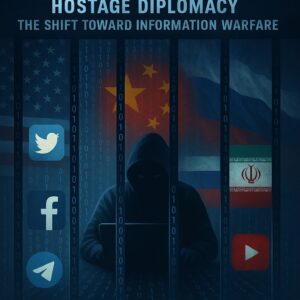
As more and more governments become adept at using the media to shape the narrative, strategic communications will define the success or failure of future hostage diplomacy. Countries that can control the narrative around these exchanges, frame the conversation, and leverage international opinions are likely to emerge as the victors in these diplomatic chess games.
In the context of the UAE’s strategic brokering of the latest U.S.-Russia exchange, it becomes clear that the future of hostage diplomacy will involve even more manipulation of information and media coverage. The ability to control perceptions, deflect criticisms, and ensure that one’s political interests remain unchallenged will be the key to future hostage diplomacy. It’s no longer just about getting a prisoner back—it’s about crafting the global narrative.
Hostage diplomacy is evolving from a simple exchange of prisoners into a more complex form of strategic communication and information warfare. As nations become more adept at controlling the media narrative, the future of these exchanges will depend less on the people involved and more on the stories told. The UAE, like the geopolitical players before it, knows this well: in the age of information, who controls the story often wins the most significant prizes.
America’s Conundrum: The Optics of Compassion vs. Strategic Concessions

The United States, committed to liberal democratic ideals and the rule of law, often finds itself in the awkward position of having to make morally defensible but strategically costly decisions. The release of an American national from a Russian prison is naturally greeted with applause across the political spectrum. It makes for a compelling narrative — the triumphant return of an unjustly imprisoned citizen, the administration’s commitment to protecting its people abroad.
But that storyline obscures the complexity of the situation. Who did the U.S. give up in return? Typically, it’s not an equal exchange. More often than not, the U.S. releases a hardened Russian operative — someone embedded in arms trafficking, espionage, or sanctioned enterprises — whose return is not only welcomed in Moscow but celebrated. These are not mere political pawns; they are strategic chess pieces.
This raises uncomfortable questions. Is the U.S. inadvertently incentivizing a pattern of hostage-taking? Is Washington enabling the very system that endangers its own citizens?
The answer, though not explicitly stated, is unsettling. As a geopolitical analyst might quip, “Every time we bring one home, we write a blank check for the next abduction.”
The optics may serve a short-term political win, but the long-term strategic implications remain ominous — signaling a willingness to trade justice for convenience, deterrence for emotion.
Russia’s Calculation: The Art of Legalized Kidnapping

Russia has weaponized ambiguity, and nowhere is this more evident than in its use of detentions. Its judiciary is not a neutral arbiter of justice but an extension of statecraft. Western nationals are detained under vague charges — espionage, drug possession, state security threats — often without credible evidence or due process.
These arrests are not incidental. They are targeted, premeditated, and transactional. The Kremlin’s goal is never just punishment — it is leverage. With each detained journalist, marine, or civilian, Russia creates a new bargaining chip.
In the latest swap, Russia regained an asset of significant value — someone tied to strategic operations or illicit state-linked enterprises. Their return is not only a domestic PR coup for Putin but also a loyalty boost for Russian operatives abroad. “We don’t leave our spies behind” — this implicit promise galvanizes clandestine circles and deepens their commitment to high-risk missions.
In this respect, the Kremlin operates like a mafia don: offer protection, extract loyalty, and show you can always get your guy back — no matter the price.
Normalizing Hostage Diplomacy: The New Geopolitical Marketplace

What makes this exchange especially dangerous is the precedent it affirms: that hostage-taking is now an effective state policy. The more frequently such exchanges occur, the more they normalize a new form of 21st-century piracy.
Unlike Cold War-era spy swaps — which involved professionals knowingly operating under hostile conditions — today’s detainees are often civilians with no role in espionage. Journalists, aid workers, business executives, and tourists are all potential targets. In a world where authoritarian states face little accountability, the calculus is disturbingly straightforward: detain a Westerner, extract a concession, repeat.
This undermines international law and the credibility of institutions like the UN, while eroding public confidence in the safety of international travel. Worse, it sends a chilling message to adversaries and allies alike: the United States is a compassionate negotiator — and, by extension, a vulnerable one.
As an intelligence official could privately lament, “We used to be feared; now we’re emotionally blackmailed.”
Rapprochement Mirage: The False Dawn of Cooperation

The prisoner swap has sparked speculation that it could mark the beginning of a diplomatic thaw between Washington and Moscow. Such hopes are premature. Cooperation on humanitarian grounds — especially under heavy pressure from allies, families, and NGOs — does not equate to a softening of strategic positions.
On Ukraine, Russia remains entrenched. On cyber warfare, the attacks continue. On disinformation, Moscow’s footprint is expanding across Europe, Africa, and Latin America. This exchange changes none of that. It is a blip — a tactical maneuver that helps both sides claim a PR win without yielding ground.
In fact, Russia may see this exchange as proof that the West can be manipulated through public pressure. What appears to be goodwill may be interpreted by Moscow as weakness — a state willing to give away the queen to save a bishop.
If there’s any rapprochement in the works, it is not one of equals, but of calculated manipulation — a strategic sleight-of-hand in the middle of a geopolitical knife fight.
Intelligence Implications: A Boost for Russia’s Shadow War

From a counterintelligence standpoint, this swap represents a clear gain for Moscow. Each time a high-value asset is returned home, it signals to the Russian security and intelligence apparatus that risks are worth taking. Operational failures can be redeemed. Capture is not final.
This emboldens more aggressive Russian behavior abroad — deeper infiltration into Western systems, bolder cyber campaigns, and covert recruitment drives. Worse, it tells other regimes (China, Iran, North Korea) that hostile acts — including detentions — can yield results if the West is morally compelled to trade.
The U.S. now faces a heightened burden: to track the movements of returned agents, monitor retaliatory operations, and counteract propaganda suggesting that Western law enforcement is porous or politicized.
In short, the battlefield is not cleared — it just moved into a darker room.
Long-Term Implications: Reputation, Risk, and Realpolitik

This exchange, though hailed in some corners as a humanitarian achievement, may have long-lasting ripple effects that far outweigh its immediate gains.

Diplomatic
Other adversarial regimes may now test the same tactic, leading to more detentions and sham trials.
Allies may grow concerned that the U.S. is not setting strong deterrent norms, inviting pressure on their own citizens abroad.
Legal
Future cases may be complicated by expectations that all high-profile detainees can or should be swapped.
It also raises questions about the U.S. judiciary’s independence when legal proceedings are influenced by external diplomatic demands.
Psychological
Russian, Chinese, and Iranian intelligence services are watching closely. The message they receive is not one of compassion, but of vulnerability — and opportunity.
The Exchange as a Mirror of Values

Perhaps the deepest irony of the exchange is that it highlights the profound divergence in values between authoritarian states and liberal democracies. The U.S. trades to bring people home because it values life, individual rights, and family unity. Russia trades to reclaim power, sow fear, and send messages to its security apparatus.
“We value life — they value leverage.” That, in the end, is the heart of the difference.
But in a world ruled not just by ideals, but by strategy, the U.S. must now find a way to preserve its moral compass while defending its citizens more effectively. Compassion without deterrence invites exploitation. Victory without caution invites repetition.
The chessboard is set. But in this version of the game, one side plays for power. The other plays for peace. And both must reckon with the cost of every move.
Ballet, Microchips, and Geopolitical Chess: The Symbolism of the U.S.-Russia Prisoner Swap in the UAE

In a world increasingly resembling a surrealist stage play rather than a rule-bound international system, the recent U.S.-Russia prisoner exchange brokered in Abu Dhabi was both a moment of relief and a masterclass in political asymmetry. The deal saw the return of Ksenia Karelina, a Russian-American ballerina turned Kremlin scapegoat, in exchange for Arthur Petrov, a German-Russian dual citizen and alleged cog in Moscow’s military-industrial espionage machine. The optics? Stark. The message? Louder than a Bolshoi overture.
Ksenia Karelina: When Pirouettes Become Provocations

Ksenia Karelina, a graceful ballet enthusiast from Los Angeles, walked straight into a geopolitical trap during what should have been a family visit to Yekaterinburg. Her crime? Donating approximately $52 to a Ukrainian humanitarian cause. Her punishment? Twelve years in a Russian penal colony on charges of treason. Yes, you read that right—treason for a transaction that couldn’t even buy dinner for two in central Moscow.
This absurdity was not just bureaucratic overreach—it was a signal. Russia, in its current paranoid phase, treats dual nationals like Schrödinger’s traitors: guilty the moment they land. The Kremlin doesn’t see a ballet dancer; it sees a narrative opportunity. “In Russia, even a plié can be a provocation,” as one might say.
Karelina became a pawn—albeit a resilient one—in a calculated game of leverage. Her release, while emotionally stirring, underscores the brutal reality that soft power symbols like artists, athletes, and journalists are increasingly considered collateral in the great power rivalry of our era.
Arthur Petrov: The Merchant of Microelectronics

On the other end of the moral seesaw stood Arthur Petrov, who, unlike Karelina, wasn’t sending warm wishes and tea money to Ukraine. He was allegedly funneling American microelectronics straight into the Kremlin’s war machine, in violation of U.S. sanctions. Think of him as a bespoke technologist for a regime trying to recreate the Soviet Union with NVIDIA chips.
Petrov’s activities—less idealistic, more transactional—represented a real threat. His job was not to lift spirits with pirouettes but to enable death-by-digital-guidance systems in Ukraine. And yet, he gets a one-way ticket home, where he’ll likely be welcomed as a patriot who stood toe-to-toe with Western legal systems.
The contrast could not be starker. Karelina donated to charity. Petrov donated to warfare. But in the algebra of international diplomacy, justice is less about symmetry and more about strategy.
The Asymmetry of Values: Dancing with the Devil in Diplomatic Slippers

This wasn’t just an exchange—it was a mirror held up to the face of each nation’s values.
For the U.S., securing Karelina’s release was an act of civic virtue, a reminder that even the smallest citizens deserve protection from authoritarian regimes.
For Russia, retrieving Petrov was a message to its agents abroad: “We’ve got your back—even if you get caught with your hand in the silicon cookie jar.”
One side plays defense of human rights; the other plays offense in a shadow war. The mismatch is both sobering and revealing. “One man’s patriot is another’s provocateur,” but in this case, one was a ballerina, and the other a hardware smuggler.
The Perils of Precedent: Hostage Diplomacy and Strategic Cynicism

Let’s not sugarcoat it: this kind of swap sets dangerous precedent. The more autocracies see that arresting random dual nationals leads to high-value returns, the more likely they are to repeat the tactic.
Today it’s Karelina. Tomorrow, it might be a grad student. Or a tourist. Or a journalist who blinked too loudly near Red Square.
This is not diplomacy; it’s state-sponsored extortion wearing the perfume of humanitarianism.
And then there’s the optics for Washington. Trading a low-risk human rights abuse victim for a potential facilitator of weapons technology? That’s a hard sell at a congressional briefing. It’s a reminder that the U.S., while morally upright, is often diplomatically hamstrung—its adversaries play by different rules and revel in making America squirm on principle.
The Intelligence Wild Card: Moscow’s Message to the West

The return of Petrov is also a signal to Russia’s intelligence community: “Your risk is our reward.” It emboldens a global network of sanctioned actors, covert operatives, and proxy facilitators who now know that even when caught, they may find themselves in a cushy exchange, swapped for an unsuspecting pianist or ping-pong player with dual citizenship.
The Kremlin has mastered the art of exporting its domestic paranoia and importing international leverage.
In the eyes of Russia’s hybrid warfare strategists, every Western passport is a potential liability and every legal proceeding a bargaining chip.
Final Pirouette: The World Stage Is Tilted

This exchange—choreographed in the Gulf, applauded in Moscow, and begrudgingly accepted in D.C.—is emblematic of the shifting global order. It exposes the vulnerability of open societies to closed regimes and the willingness of autocrats to weaponize every corner of civil society.
As the curtain falls on this particular drama, we are left to ponder what future performance awaits. One thing is certain: in the next act, the stakes will be higher, the roles more complex, and the dancers less innocent.
Because in the age of transactional diplomacy, freedom may be priceless, but it’s never free.
From Desert Neutrality to Global Leverage: The UAE’s Diplomatic Star Turn

In a world where neutrality is increasingly a luxury few can afford, the United Arab Emirates has carved out a new role—not just as a financial powerhouse or a regional influencer, but as the world’s velvet-gloved diplomat in an age of geopolitical trench warfare. The latest U.S.-Russia prisoner swap in Abu Dhabi was not an anomaly. It was a masterstroke in a well-calculated pattern: the UAE is no longer just the table everyone gathers around—it’s becoming the architect of the room.
The UAE’s Quiet Diplomacy: When Oil Meets Subtlety
The UAE’s foreign policy in the last decade has been a study in balancing ambition with ambiguity. Unlike traditional mediators who trumpet neutrality while quietly leaning toward one camp, Abu Dhabi has embraced a sort of strategic polyamory—courting Washington, Moscow, Beijing, and Tel Aviv with equal poise. And it’s working.
From hosting Afghan peace talks before the Taliban took Kabul, to mediating Israel-Sudan normalization under the Abraham Accords, and now facilitating high-stakes exchanges between nuclear powers, the UAE has mastered the fine art of staying useful without appearing biased.
Where others pick sides, the Emirates pick strategy.
In the case of the Karelina–Petrov exchange, the UAE’s role wasn’t just symbolic—it was pivotal. Neither Washington nor Moscow trusts each other enough to even share a Zoom link. But both trust the Emirates to provide the air-conditioned, security-tight space for high-stakes diplomacy—and perhaps more importantly, the discretion not to turn it into a press conference.
Geopolitical Concierge: Abu Dhabi as Broker to the World
The Emirates’ hosting of this prisoner swap is about more than geographic convenience—it’s about cultivating indispensable relevance. The UAE has methodically positioned itself as a concierge state: facilitating crises, bridging conversations, and removing thorns from superpower paws.
In doing so, it becomes harder to criticize, easier to engage with, and—most importantly—impossible to ignore.
And unlike Switzerland, whose neutrality is inherited like a grandparent’s watch, the UAE’s neutrality is dynamic, transactional, and nimble. It is not afraid to host a Russian oligarch one week and a Pentagon delegation the next.
Call it “multi-vector diplomacy,” call it “balancing the sand,” but one can’t deny: it’s wildly effective.
Why the UAE Works: Infrastructure, Image, and Intent
The Emirates offer a combination that few other potential brokers can match:
World-class infrastructure capable of hosting secure, high-profile diplomatic encounters.
A cultivated image of tolerance and modernity—less threatening than Riyadh, more stable than Doha.
An intent to lead in the Middle East not just by arms and influence, but by mediation and narrative control.
The Emirates don’t just build cities—they build perceptions. In a world addicted to optics, perception is currency. And the UAE’s bank is full.
Risks and Rewards: Walking the Diplomatic Tightrope

But playing global arbiter is not without its risks. As geopolitical tensions deepen, neutrality becomes more scrutinized. Every handshake with Russia risks a frown from Washington. Every photo-op with Iran may ripple in Riyadh or Jerusalem.
The UAE’s bet is that by being useful to everyone, it can protect itself from the wrath of anyone. So far, it’s working—but the higher one climbs, the closer they are to lightning.
The Emirates’ mediation in the prisoner swap sets a precedent not just for their own foreign policy, but for what middle powers can do in a chaotic world. It proves that small states can punch above their weight if they master the art of timing, trust, and tact.
The Long Game: A Permanent Seat at Every Table
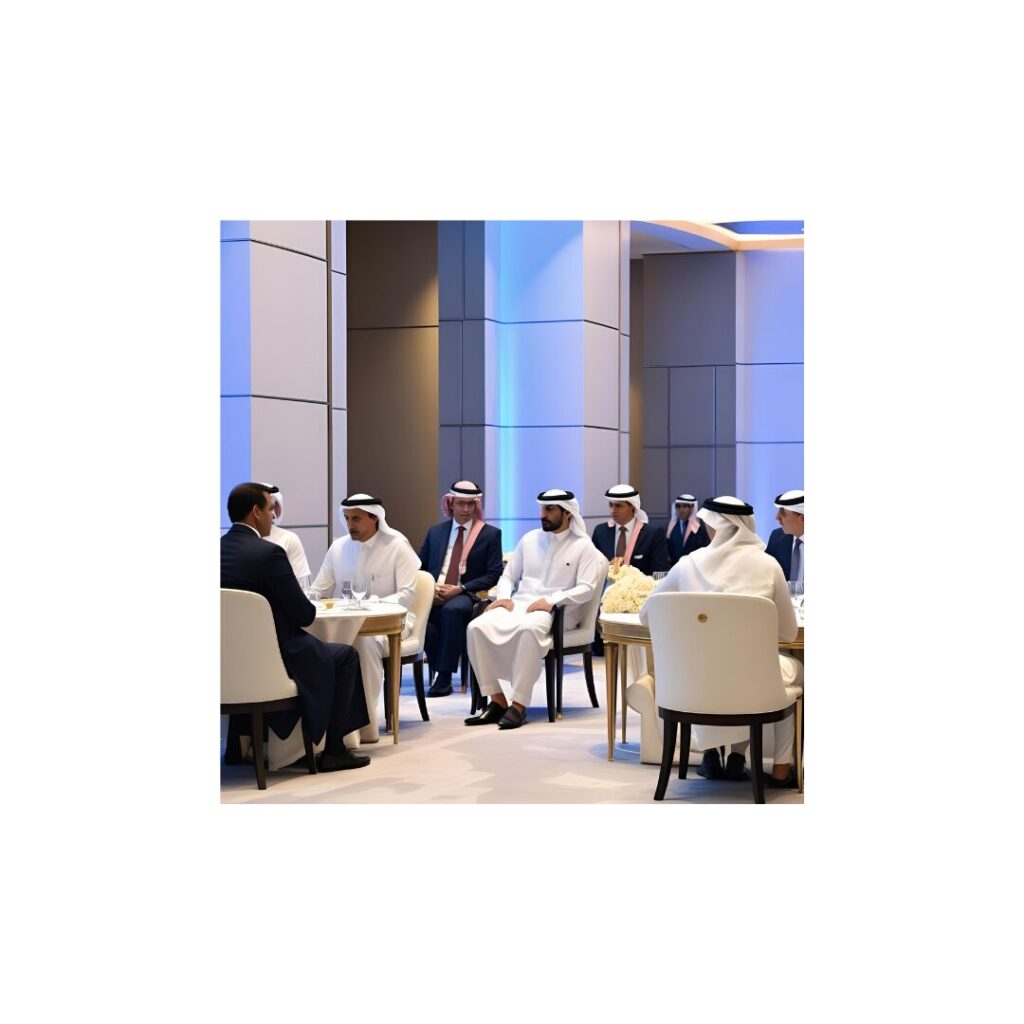
What does the UAE want in return? Not applause. Not even direct leverage. What it wants is to become the de facto capital of quiet solutions—a Geneva with better architecture and fewer winters.
It wants every intelligence agency, every conflict resolution team, and every back-channel negotiator to put “Abu Dhabi” on their short list for crises and swaps alike.
And let’s be honest—while the world burns in polarized chaos, having a trusted middleman in a velvet kandura might just be what 21st-century diplomacy needs.
As one could say: “In a world of extremes, the calmest camel wins the caravan”.
Diplomacy at Gunpoint: Comparing the UAE-Brokered Swap to Other High-Stakes Exchanges

In the chessboard of modern geopolitics, prisoner exchanges have become the queen’s gambit of diplomacy: risky, strategic, and laden with symbolic significance. While the recent swap in Abu Dhabi may seem like yet another transactional moment in a world accustomed to smoke-filled backrooms, its deeper resonance becomes clear only when placed against the backdrop of other landmark exchanges.
The Griner-Bout Swap: Public Relations vs Realpolitik
Few exchanges in recent memory sparked as much public ire and divided commentary as the 2022 swap of WNBA star Brittney Griner for Russian arms dealer Viktor Bout—also known by the ominous nickname “The Merchant of Death.”
This was a classic case of “optics vs equivalency.”
Griner: A globally recognizable figure, detained on minor drug charges and used as a geopolitical pawn.

Bout: A notorious arms trafficker with long-standing ties to militant regimes and warlords.

While the Biden administration framed the exchange as a victory for American values and humanitarianism, critics—and not just on the conservative side—grumbled that the deal emboldened autocracies to grab Westerners as hostages for lopsided trade-offs.
As one might quip, “You don’t negotiate with terrorists—but you do barter with arms dealers.”
In contrast, the UAE-brokered swap presented a more subtle pairing: lower-profile individuals, less PR theater, and a cleaner process that didn’t place the U.S. under the scrutiny of releasing a human WMD.
Cold War Classics: Abel for Powers, and the Berlin Bridge Tradition
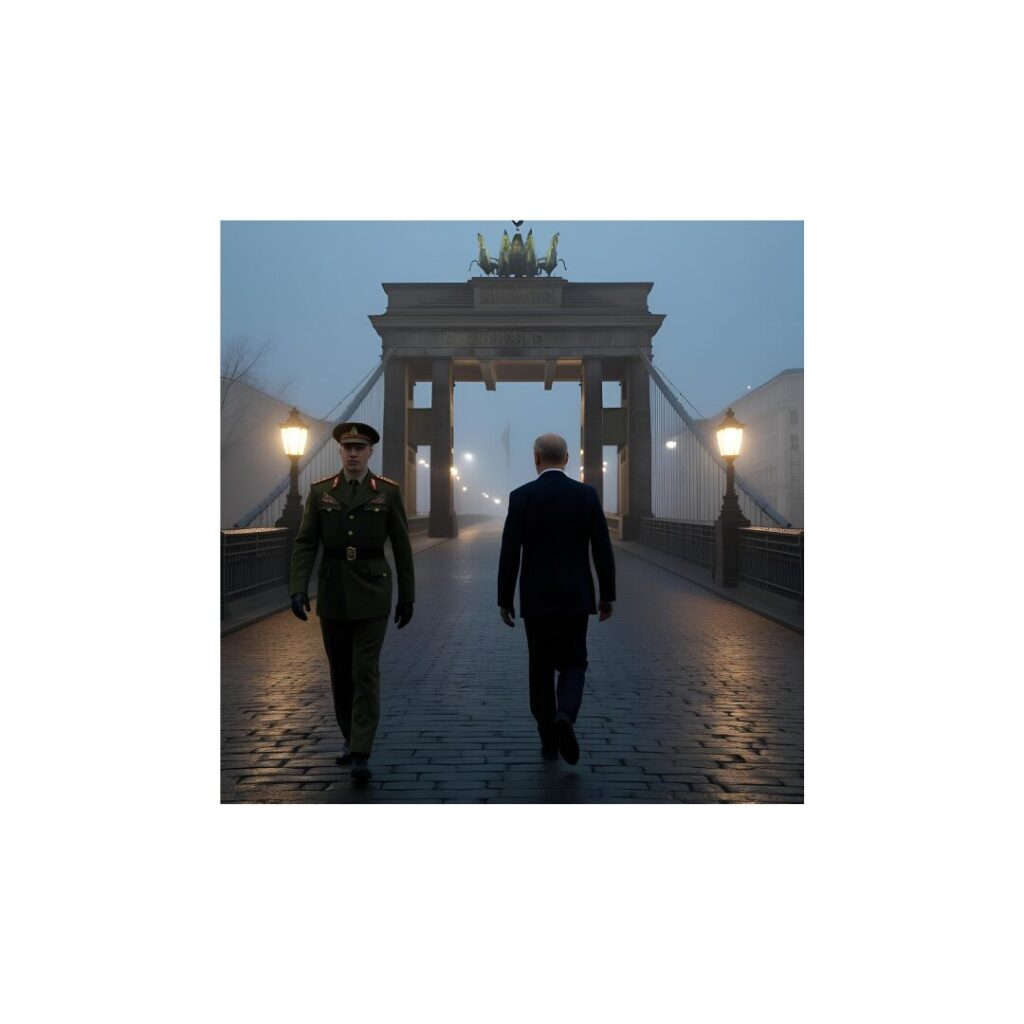
One can’t discuss prisoner swaps without invoking the Cold War’s golden standard: the 1962 exchange of Soviet spy Rudolf Abel for U-2 pilot Francis Gary Powers on Berlin’s Glienicke Bridge—a moment immortalized in film and diplomatic lore.
This was spycraft theater at its finest: trench coats, fog, and ideological purity.
The symmetry of the swap was near-perfect: intelligence asset for intelligence asset.
Compared to that, modern swaps like the UAE deal are more transactional and post-ideological, though no less significant. They echo the Cold War, but with a 21st-century twist: less trench coat, more trade show.
And yet, both share a similar function—managing risk without acknowledging weakness. As in the Cold War, today’s swaps are less about the individuals involved and more about the messaging.
It’s like a diplomatic version of exchanging pieces in chess to simplify the board before a deeper endgame.
The Mossad Playbook: Quiet Deals, High Stakes
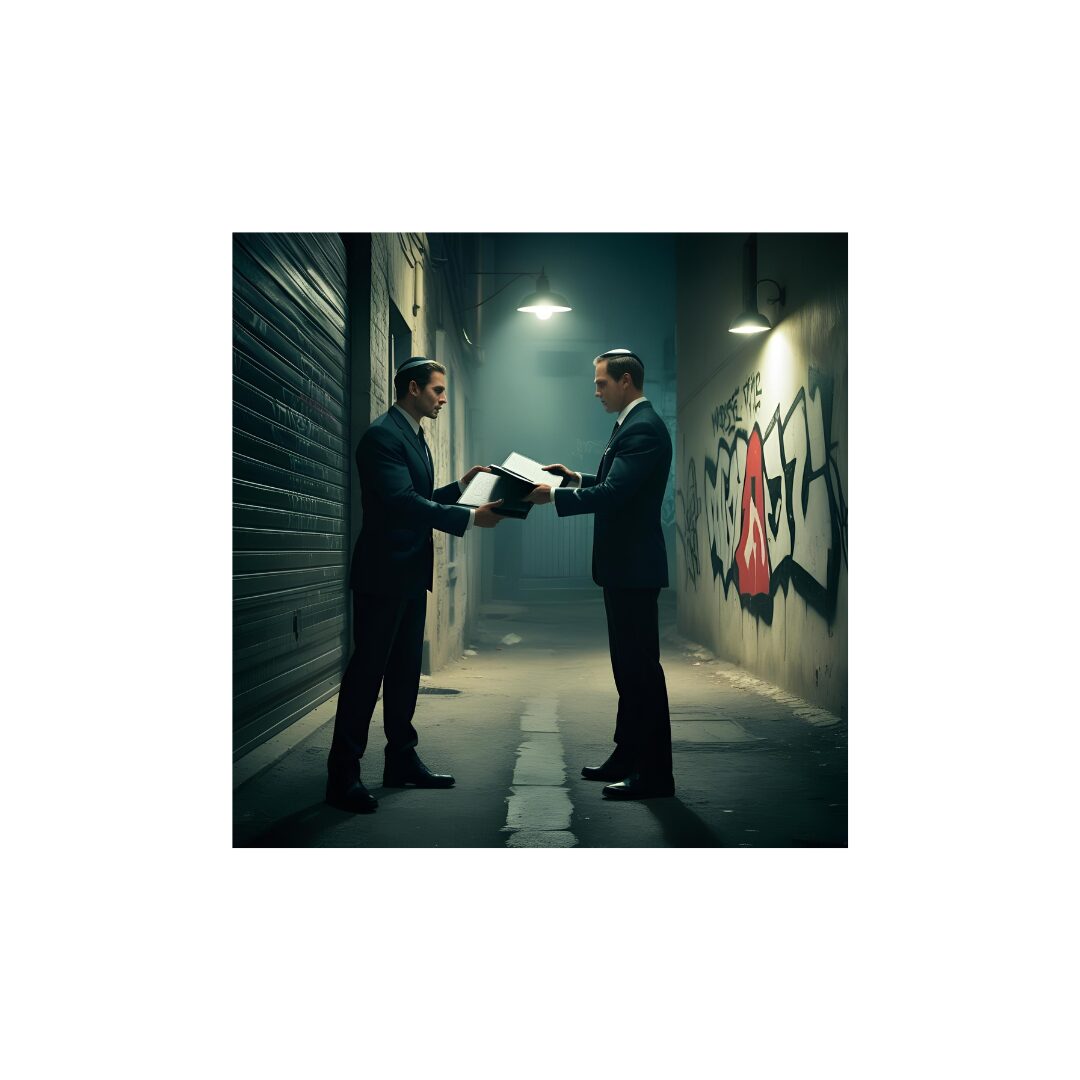
Israel, too, has long operated its own school of high-profile exchanges, albeit with a brutal emotional calculus. From the Gilad Shalit swap (over 1,000 Palestinian prisoners for one IDF soldier) to shadowy operations recovering the remains of fallen agents, the Israelis have always viewed swaps through a uniquely existential lens.
Their doctrine could be summarized as: “We never leave one behind—even if we bring 1,000 risks home in return.”
In contrast, the U.S. plays it cooler, more bureaucratic, more allergic to moral absolutism—unless public pressure makes it impossible to do otherwise. The UAE’s model is something in between: facilitation, not passion. Transactional without being cynical. That neutrality is what makes it so attractive as a host.
What Makes the UAE Swap Stand Out?
Unlike previous high-profile swaps, the UAE-brokered deal stood out for:
Its discretion: no media circus, no teary homecomings aired live.
Its location: a country playing all sides but anchoring none.
Its timing: at a moment of heightened U.S.-Russia tensions where even a minor diplomatic gesture risks sending the wrong signal.
What Abu Dhabi offered was not just a place—but a vibe. A silk-lined airlock in the middle of a diplomatic vacuum.
And here’s the kicker: the UAE didn’t make itself important by yelling the loudest. It did so by whispering just loud enough for both superpowers to hear.
The Future of Hostage Diplomacy: Trading Cards in an Age of Uncertainty

The UAE-brokered exchange is more than a singular diplomatic event—it is a bellwether of things to come in the evolving theater of hostage diplomacy, a term that once conjured images of rogue states and terrorists, but now increasingly applies to state actors in tailored suits wielding legal frameworks as weapons of coercion.
From Coincidence to Currency
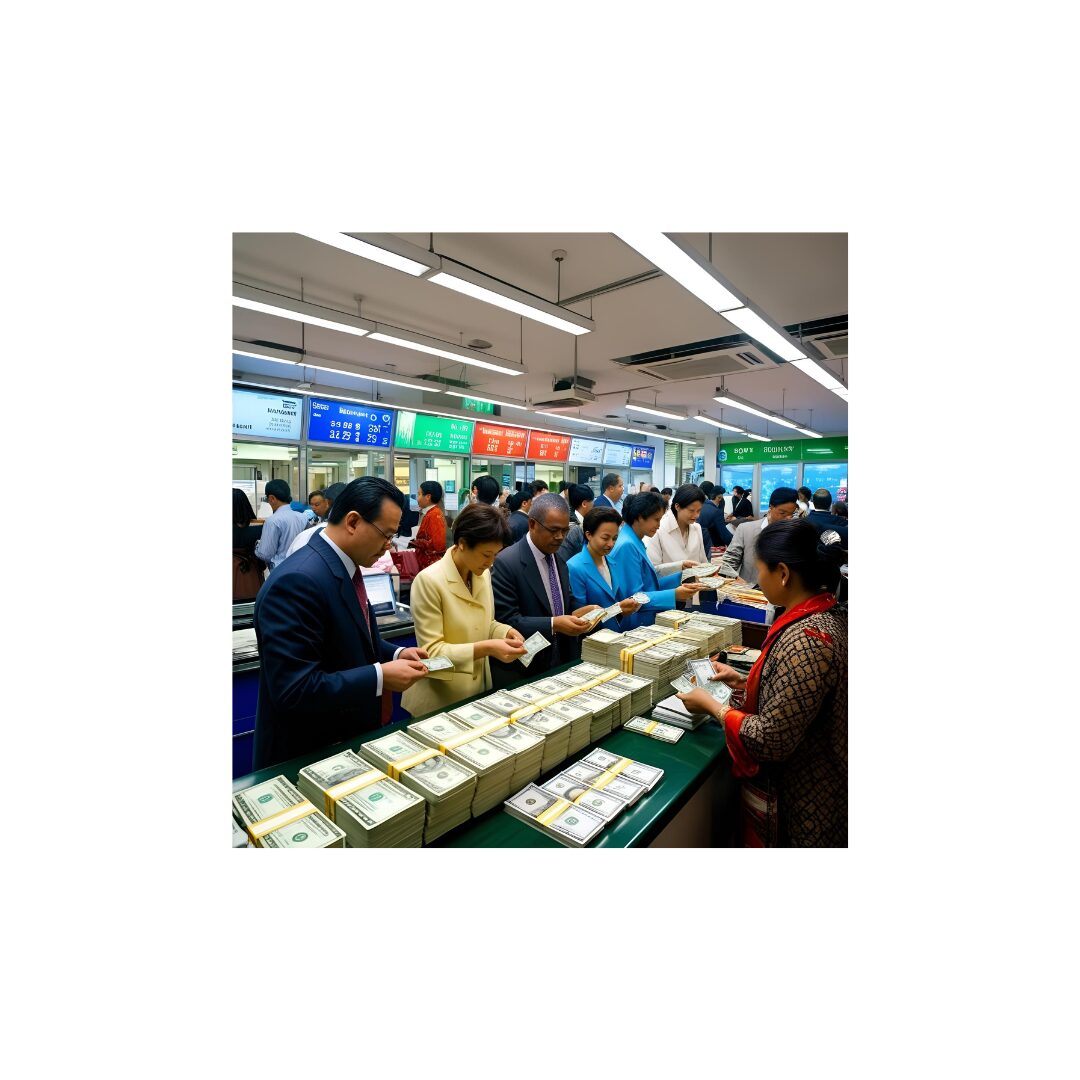
What once appeared ad hoc—hostage-taking for political leverage—has evolved into a structured diplomatic currency. In this environment, individual lives are traded like geopolitical NFTs: symbolic, valuable, and impossible to price accurately.
By orchestrating a smooth, calculated swap with minimal theatrics, the UAE has effectively normalized the practice without moralizing it. This sets a precedent: it is no longer shameful to trade prisoners with adversarial powers—it is practical, inevitable, and part of the machinery of modern diplomacy.
The message to authoritarian regimes is crystal clear: “If you grab a Westerner, we’ll eventually pick up the phone.” That’s not appeasement—it’s logistics.
Optics vs Outcomes: The Trap Ahead for the West
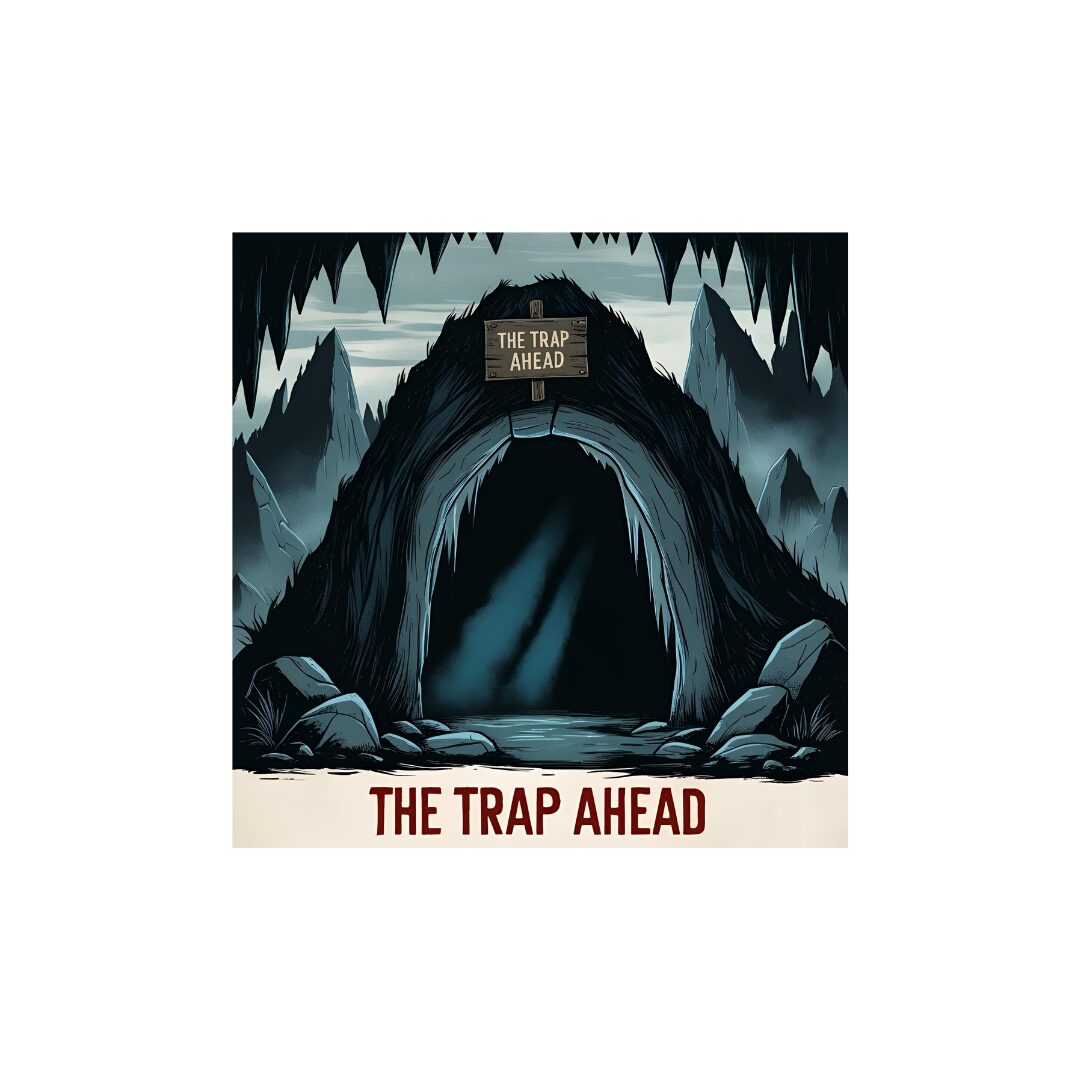
Western governments, especially the U.S., now face a new dilemma: how to protect citizens from abduction or trumped-up arrests abroad without signaling that every detained journalist, athlete, or businessman is an eventual chip to be exchanged for spies, assassins, or military engineers.
There is a real danger of turning moral hazard into policy inertia: the more these swaps succeed, the more valuable hostages become. Rogue regimes will adapt accordingly, updating their blackmail playbooks.
Iran already excels at this.
Russia is a quick learner.
China plays the long game.
The West, meanwhile, still struggles to draw a red line between “rescue” and “reward.”
Strategic Adaptation or Escalation?
Expect a three-tier evolution in hostage diplomacy:
Professionalization of hostage negotiators and diplomatic brokers (the UAE model will be replicated).
Codification of unofficial norms—states will create unspoken “exchange equivalency charts,” even if they never admit it.
Weaponization of the practice by rogue intelligence services to test Western thresholds for escalation.
The success of the UAE’s role offers an appealing neutral forum—but it also outsources Western moral responsibility. When swaps become routine, the question isn’t whether we’re negotiating with bad actors—it’s whether we’re outsourcing our strategic soul to the highest-functioning middleman.
Looking Ahead: Deterrence or Dependency?
This new paradigm demands creative deterrence—not just swift swaps, but preemptive pressure campaigns, legal reciprocity frameworks, and alliances of democracies that will retaliate in kind if one of their citizens is unlawfully detained.
Otherwise, hostage diplomacy will evolve from a crisis response to a chronic condition of foreign policy, where every passport carries a price tag and every headline is another case study in strategic surrender.
As one might say in the corridors of realpolitik: “If diplomacy is war by other means, hostage swaps are the ceasefires we pretend are peace.”
The Art of Trading Aces for Jokers: Hostage Diplomacy in the Age of 5D Chess

The U.S. Strategy – Feelings First, Strategy Later

PR Over Payload: America’s Celebrity-for-Warlord Exchanges
There’s an old saying: “Don’t bring a basketball to a gunfight.” Yet the United States repeatedly does just that. From trading warlords like Viktor “Merchant of Death” Bout for WNBA star Brittney Griner, Washington’s ledger on high-profile swaps reads more like emotional arithmetic than geopolitical calculus. These lopsided trades may win applause from the peanut gallery but sacrifice long-term strategic positioning.
Diplomacy by Hashtag: When Public Pressure Sets Policy
The U.S. has perfected a new formula: Let social media outrage set the hostage negotiation tone. With every hashtag campaign comes a signal to authoritarian regimes: Want something from Washington? Detain an American influencer, activist, or journalist. Bonus points if they check an identity-politics box.
Where’s the Stick?
While carrots are flung like candy at a parade, the U.S. rarely uses sticks. No retaliatory detentions. No frozen assets. No travel bans on officials orchestrating the grabs. Without deterrents, hostage diplomacy becomes a cost-free venture for adversaries.
Too Quiet, Too Late
Washington’s default to silent diplomacy often leaves it flat-footed, especially when rogue states weaponize public spectacles. The result? American negotiators arrive at the poker table with a blindfold and no chips, while their adversaries run the table.
Moscow’s Theatrics – KGB Nostalgia With No Exit Plan

Kremlin’s Favorite Parlor Trick: Arrest, Accuse, Repeat
Russia has taken to hostage diplomacy like it’s the 1970s all over again. The charges are fictional, the courts are kangaroo, and the goals are transparent: leverage, humiliation, and the occasional domestic distraction. Espionage, tax evasion, or money laundering—take your pick.
Legal Theater: Now Showing in Moscow
Russia still pretends its hostage detentions are rooted in law. Everyone else—especially the captives—knows the trial is just the intermission between arrest and propaganda victory. The downside? Russia burns what little credibility remains in its legal institutions.
Pawn Shop of Propaganda: Selling Real Assets for Memes
Moscow’s love for propaganda often overrides strategic sense. In its eagerness to score points against Washington, it has swapped away valuable assets like arms dealers and deep-cover operatives for splashy media wins that age like milk.
Your Friend Until You’re a Liability
Russia’s diplomatic use of third-party nations like the UAE and Turkey as middlemen has worked—until now. As the global tide shifts, these countries are increasingly cautious of being seen as Kremlin couriers. The charm is fading.
Beijing and Tehran – Hostage Diplomacy Goes to Finishing School
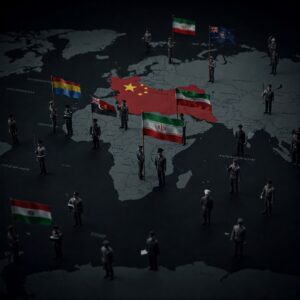
China’s Game of Thrones: Calculated, Cold, and Consistent
If the U.S. and Russia are tossing Molotov cocktails into their own bunkers, China is playing Go. Beijing’s detentions are chess pieces—not trophies. Every move is deliberate, aimed at long-term political gains, economic leverage, or silencing critics.
The Michaels Gambit: Detain, Delay, Dominate
When China detained two Canadians after Meng Wanzhou’s arrest, it wasn’t mere tit-for-tat—it was strategic theater. Beijing didn’t just want its executive back. It wanted to rewrite the rules of engagement and show allies of the West that cooperation comes with a price.
No Apologies, No Optics
Unlike Washington, Beijing doesn’t need the feel-good storyline. Hostages aren’t humanitarian projects; they’re pressure points. The message? “Play by our rules, or your citizens play jailhouse Scrabble for three years.”
Tehran’s Hostage Bazaar – Where Ideology Meets Opportunism
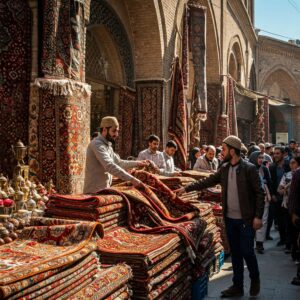
The Supreme Swap Mart
Iran doesn’t just detain for leverage—it detains for narrative. Each captive is a symbol of resistance, a chapter in Tehran’s story of defiance. When Americans or Europeans are jailed, it’s not just about what they did; it’s about what they represent.
Slow-Cooked Strategy
Iran’s detentions age like wine—simmered for maximum pressure. There’s no rush. Tehran plays the long con, knowing that a well-timed swap can tip scales in nuclear talks or ease sanctions.
Hostages as Statecraft
Iran’s detainees are more than bargaining chips. They’re tools for shaping domestic and international identity. Their imprisonment reinforces the Islamic Republic’s image as sovereign, resilient, and too proud to beg.
Strategic Takeaways – When the Deck Is Rigged

America & Russia: Tactical Myopia, Strategic Amnesia
The U.S. is all about the rescue mission; Russia is all about the theater. Neither has figured out how to integrate hostage diplomacy into a broader deterrent policy. It’s a short-term fix for a long-term game.
China & Iran: The Grandmasters of Grievance
For Beijing and Tehran, hostage diplomacy is not an aberration—it’s an institution. A practiced, fine-tuned extension of national security and foreign policy. The goal isn’t just a trade—it’s transformation.
If You Keep Trading Aces for Jokers…
As a seasoned strategist would put it: “If you keep trading aces for jokers, don’t be surprised when you lose the deck.” The message is simple: hostage diplomacy is not just a test of negotiation—it’s a referendum on a nation’s strategic discipline.
The Curtain Rises on a Global Stage

Hostage diplomacy is here to stay. But only the nations that treat it not as theater—but as statecraft—will wield it effectively. China and Iran are playing a patient, ideological game. The U.S. and Russia? Still fumbling their lines.
In the age of global power competition, even the hostages aren’t just prisoners—they’re pieces on the board. And the board just got a lot more crowded.


No responses yet